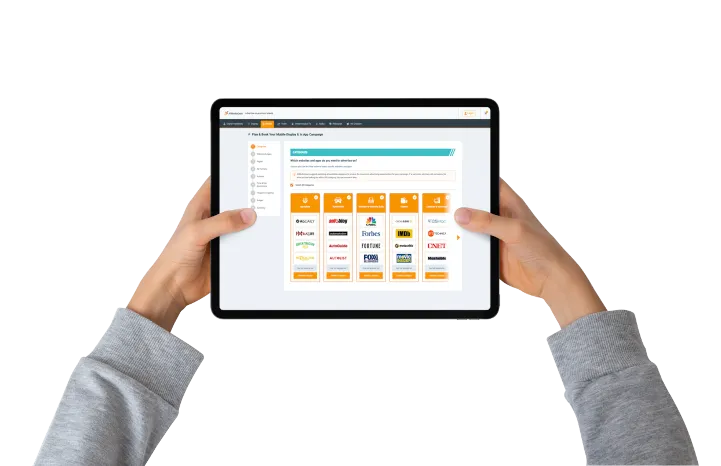Targeting in Mobile Marketing: Practical Strategies for Contextual, Location-Based, and Retargeting Campaigns
In mobile advertising, the right targeting strategy makes all the difference. From contextual targeting to location-based mobile advertising and retargeting, there are several ways to reach the right audience with the right message. Each method comes with its own strengths and limitations—especially when it comes to scalability, data access, and campaign setup across multiple publishers.
At AllMediaDesk, our self-service platform allows advertisers to easily book mobile banner and mobile video campaigns in apps or on mobile websites, while taking advantage of powerful yet practical targeting options.
Here's an overview of the options that are generally common in the mobile space:


Contextual Targeting: Reach Audiences Based on App and Website Content
One of the most scalable and privacy-friendly strategies is contextual mobile advertising—placing ads in relevant apps or on mobile websites where the content matches the advertiser’s product or message. For example, a food delivery service might choose to advertise in restaurant review apps, while a travel brand could appear on weather or trip-planning websites.
With AllMediaDesk, advertisers can choose the right environments for their campaigns, selecting specific content topics or domains that make contextual sense. This approach doesn’t rely on user tracking or behavioral data, making it especially useful in environments where first-party data is not available.

Retargeting: Limited by Data Availability Across Apps
In-app retargeting and mobile retargeting ads are effective tools for re-engaging users who have already interacted with a brand—for example, did not finish the shopping process at an online store. However, these strategies rely heavily on identifying returning users—often through device IDs or app usage patterns. In practice, this is only possible when the publisher supports such tracking and shares that information consistently. Many apps either don’t support retargeting at all or provide access only under strict limitations, making it difficult to apply this approach across a broad campaign.

First-Party Data: A Challenge for Scalable Mobile Targeting
Another common method of targeting is based on first-party data, such as login information, user profiles, or declared interests. This can enable precise audience segmentation—but it only works if the app or website collects and shares such data. In mobile environments, this is rarely consistent. Some publishers collect detailed user data, others collect none, and the format varies from one to the next. This lack of standardization makes it nearly impossible to build a scalable, unified campaign based on audience targeting. That’s why we focus on approaches like contextual and geo-targeted mobile advertising, which are more universally supported and easier to implement across the mobile ecosystem.

Geo-Targeting & Local Mobile Advertising: Relevance by Location
Location-based mobile advertising is one of the most effective ways to connect with users based on real-world context. Whether you're running a national retail campaign or a hyperlocal promotion, geo-targeting ensures your ads are shown to users in the right place at the right time.
There are two main ways to implement geo-targeted mobile ads:
- GPS-based geo-targeting: When apps or mobile websites share GPS data, we use this for highly precise location targeting, even down to street level.
- IP-based geo-targeting: If GPS data isn’t available, we fall back on IP addresses to estimate user location. This allows for city-level or regional targeting even in less data-rich environments.
The options here power campaigns in local mobile advertising, geo-conquesting mobile marketing, and mobile geolocation advertising—allowing you to target users near your own locations or even those near a competitor’s store.
A Practical Approach to Targeted Mobile Advertising
With limited availability of first-party data and growing concerns around user privacy, strategies like contextual targeting, geo-targeted mobile ads, and local mobile advertising have become more important than ever. These options offer reliable performance, broad compatibility across publishers, and easier campaign setup without sacrificing relevance.
AllMediaDesk’s self-service platform makes it simple to launch mobile campaigns that use these powerful targeting options—without the technical complexity or data fragmentation of traditional ad systems.



